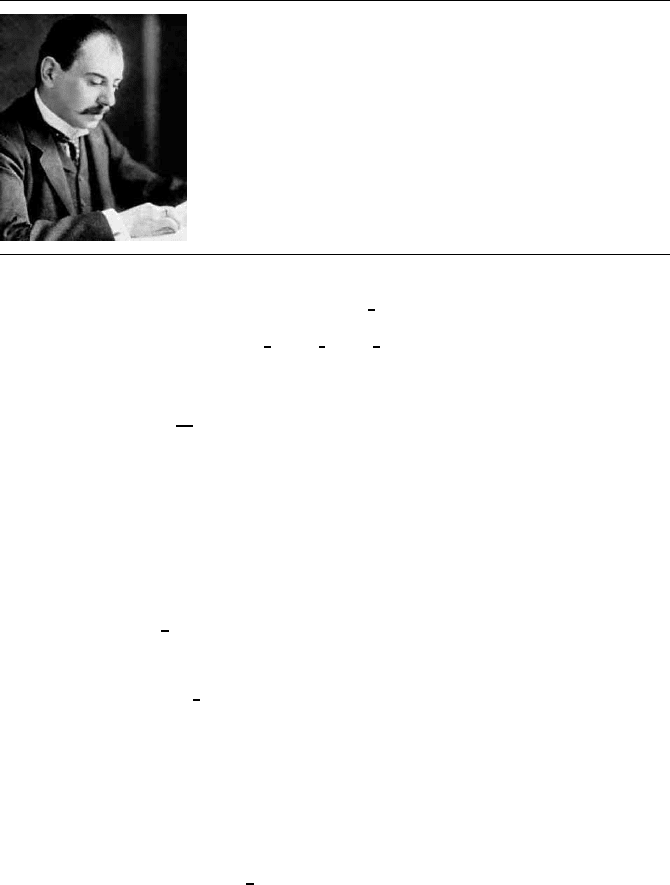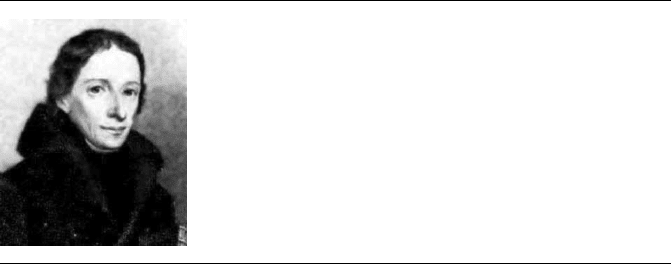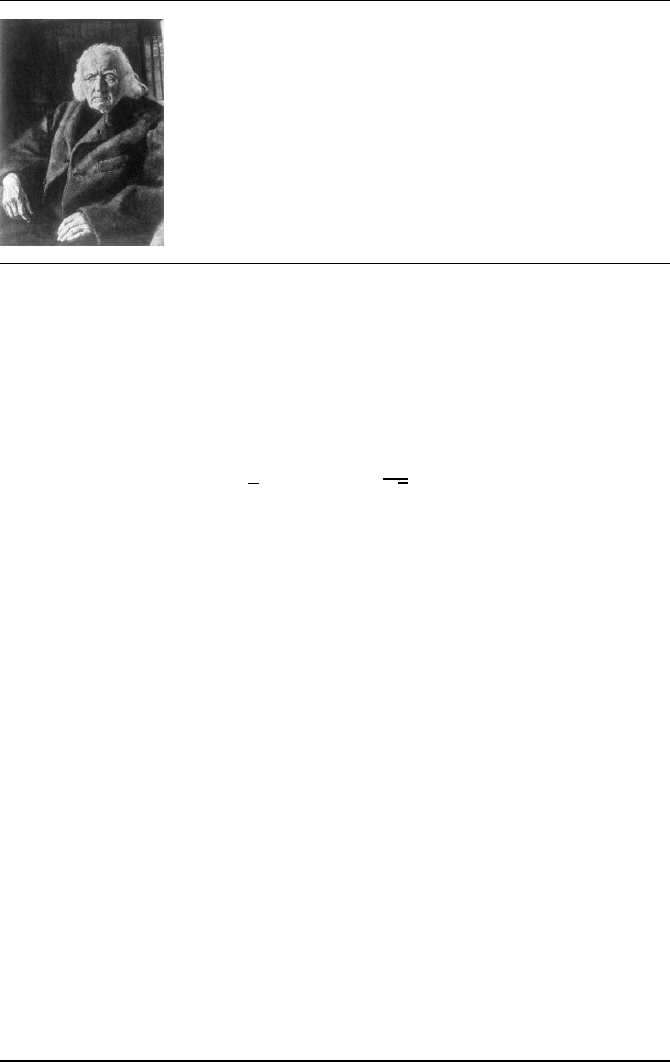Appel W. Mathematics for Physics and Physicists
Подождите немного. Документ загружается.


Normed vector spaces 577
A.2
Normed vector spaces
A.2.a Norms, seminorms
In this section, K is either R or C, and E is a K-vector space, not necessarily
of finite dimension.
DEFINITION A.17 (Norm) Let E be a K-vector space. A norm on E is a map
N : E → R which satisfies the following properties, for all x, y ∈ E and
λ ∈ K:
N1 : we have N (x) ¾ 0;
N2 : we have
N(x) = 0 ⇐⇒ x = 0
;
N3 : we have N (λ x) = |λ| N(x);
N4 : we have N (x + y) ¶ N (x) + N ( y) (triangular inequality)
If is customary to write kxk for the norm of an element x, and to denote by
k·k the norm map it self.
A normed vector space is a pair (E, N ) where E is a vector space and N
is a norm on E.
DEFINITION A.18 (Seminorm) Let E be a K-vector space. A seminorm on E
is a map N : E → R satisfying properties N1, N3, and N4 a bove. Note that
N3 still implies N (0) = 0.
Example A.19 Let a, b ∈ R, a < b. Let C ([a, b]) be the vector sp ace of continuous functions
defined on [a, b] , with values in K = R or C. For f ∈ C ([a, b]), le t
kf k
1
=
Z
b
a
f (x)
dx norm of convergence in mean,
kf k
2
=
s
Z
b
a
f (x)
2
dx norm of convergence in mean-square,
kf k
∞
= sup
[a,b]
|f | norme of uniform convergence.
Then k·k
1
, k·k
2
and k·k
∞
are norms on C ( [a, b]).
On the space of piecewise continuous functions, k·k
1
and k·k
2
are seminorms (a function which
is zero almost ever ywhere satisfies kf k
1
= kf k
2
= 0 but is not necessarily zero everywhere)
and k·k
∞
is a norm.
If a, b ∈ R, it i s necessary to restrict attention to integrable (resp. square integrable, resp.
bounded conti nuous) functi o ns in order that k·k
1
, k·k
2
, or k·k
∞
be defined; then they are
norms.

578 Topology and normed vector spaces
DEFINITION A.20 (Distance) Let
E, k·k
be a normed vector space. The
distance associated to the norm k·k is the map
d : E
2
−→ R,
(x, y) 7−→ d(x, y)
def
= kx − yk.
Let A ⊂ E be a non-empty subset of E and let x ∈ E. The distance from x
to A is th e real number
d(x; A)
def
= inf
y∈A
kx − yk.
A.2.b Balls and topology associated to the distance
The distance associated to a norm g ives a normed vector space the structure of
a metric space. There is then a natural topology associated with this metric; it
is of course a (very) special case of the general topological notions described
in Section A.1.
DEFINITION A.21 Let (E, k·k) be a normed vector space. Let a ∈ E and let
r ∈ R
+
. The open ba ll centered at a with radius r (for the norm k·k) is the
set defined by
B(a ; r)
def
=
x ∈ E ; kx −ak < r
.
The closed ball centered at a with radius r is the set defined by
B(a ; r)
def
=
x ∈ E ; kx −ak ¶ r
.
DEFINITION A.22 (Open set) A subset A ⊂ E is open in E if and only if,
for any x ∈ A, there exists a ball centered at x with positive radius r > 0
contained in A:
∀x ∈ A ∃r > 0 B(x ; r) ⊂ A.
DEFINITION A.23 (Closed) A subset A ⊂ E is closed in E if and only if the
complement of A in E, denoted ∁
E
A, is open.
Example A.24 A well-known French saying is that “Il faut qu’une porte soit ouverte ou fermée”
(Musset; “A door must be ei ther open or closed”); this is quite true in its way, but not in the
setting of topologic al space s and normed vector spaces in particular. For instance, in R
2
, the
set ]0, 1[ ×{0} is neither open nor closed. Similarly, in R, Q is neither open nor closed. More
surprising maybe, R (in R) is both open and closed.
DEFINITION A.25 (Interior) L et A be a subset of E. A point a ∈ E is in the
interior of A if there exists r > 0 such tha t the open ball centered at a with
radius r is contained in A:
∃r > 0 B(a ; r) ⊂ A.
The interior of A, denoted
◦
A, is the set of all interior points of A.

Normed vector spaces 579
DEFINITION A.26 (Closure) A point a ∈ E is in the closure of A if, for
any posit ive r > 0, the open ball centered at a with radius r has non-empty
intersection w ith A:
∀r > 0 B(a ; r) ∩ A 6= ∅.
The closure of A, denoted A, is the set of all a satisfying this property.
PROPOSITION A.27 For any A ⊂ E, we have
◦
A ⊂ A ⊂ A.
Example A.28 Let A be a non-empty subset of R which h as an upper bound. Then sup A ∈ A.
PROPOSITION A.29 A subset A ⊂ E is closed if and only if A is equal to its
closure: A = A. A subset B ⊂ E is open if and only if B is equal to its interior:
◦
B = B.
The definition of a dense set may then be rephrased in this manner:
DEFINITION A.30 A subset A ⊂ E is dense in E if and only if the closure
of A is the whole space E.
Example A.31 The set Q of rationals i s dense in R; the set of invertible matrices GL
n
(K) is
dense is the space M
n
(K) of all matrices. The set of diagonalizable matrices is dense in M
n
(C).
THEOREM A.32 Let E and F be normed vector spaces, D ⊂ E a dense subset of E,
and f : E → F a continuous map. If f (x) = 0 for all x ∈ D, then f is zero on E.
Example A.33 Here is an application: for any matrix A ∈ M
n
(C), we have det(exp A) =
exp(tr A). This property i s obvious in the case of a diagonalizable matrix: indeed, assume that
A = P diag(λ
1
, . . . , λ
n
)P
−1
(with P ∈ GL
n
(C)); then we have
exp A = P
exp(λ
1
)
.
.
.
exp(λ
n
)
P
−1
and
n
Q
i=1
exp(λ
i
) = exp
n
P
i=1
λ
i
.
Since the set of diagonalizable matrices is dense in M
n
(C), and since the determinant, th e trace
and the exponential function for matrices are continuous (the last being not quite obvious), it
follows that the identity is also valid for an arbitrary A ∈ M
n
(C).
Example A.34 Let f : [ 0 , 1 ] → R be a continuous function such that
f
x + y
2
=
f (x) + f ( y)
2
for all (x, y) ∈ R
2
. We want to prove that f is affine, i.e., there exist a, b ∈ R such that
f (x) = ax + b for all x ∈ [0, 1]. For thi s purpose, let b = f (0) and a = f (1) − f (0), and let
g : x 7→ f (x) − (ax + b). The function g is then continuous, and satisfies g(0) = g(1) = 0.
Moreover, g satisfies the same relation
g
x + y
2
=
g(x) + g( y)
2

580 Topology and normed vector spaces
Edmund Geo rg Hermann Landau (1877—1938), German mathe-
matician, was famous in partic u lar for his many works of analytic
number theory (in partic u lar concerning the Riemann zeta func-
tion) and his treatise on number theory. From his youngest days,
he was also interested i n math ematical problems and games, and
had published two books of chess problems even before finishing
his thesi s. He taught at the University of Berlin from 1899 to 191 9,
then at the University of Göttingen (replacing Mi nkowski) until
he was forced to resign by the Nazis in 1934 (t he SS mathemati-
cian Teichmüller organized a boycott of his classes).
as before. From this we deduce immediately that g(
1
2
) = 0, then, repeating the process, that
g(
1
4
) = g(
2
4
) = g(
3
4
) = 0,
and by an obvious inducti o n we obtain
g
k
2
n
= 0 for all n ∈ N
∗
and all k ∈ [[0, 2
n
]].
Since the set E =
k ·2
−n
; n ∈ N
∗
, k ∈ [[0, 2
n
]]
is dense in [0, 1], and since g is continuous,
we can conclude that g = 0.
THEOREM A.35 (Properties of open sets) The union of any family of open sets is
an open set.
The intersection of finitely many open sets is an open set.
Example A.36
S
n∈N
1
n
, 1
= ]0, 1[ is open in R.
Counterexample A.37 The intersection of infinitely many open sets has no reason to be open:
for instance,
T
n∈N
0, 1 +
1
n
= ]0, 1] is not open in R.
THEOREM A.38 (Properties of closed sets) The union of finitely many closed
sets is a closed set.
The intersection of any family of closed sets is a c losed set.
Counterexample A.39 As before, the union of infinitely many closed sets has no reason to be
closed: for instance,
S
n∈N
0, 1 −
1
n
= [0, 1[ is not closed.
A.2.c Comparison of sequences
DEFINITION A.40 Let E be a normed vector space.
A sequence ( u
n
)
n∈N
with values in E is dominated by a sequence (α
n
)
n∈N
of non-negative real numbers, denoted u
n
= O(α
n
) and pronounced “u
n
is
big-Oh of α
n
,” if there exist a real number A and an integer N such that
ku
n
k ¶ A |α
n
| for all n ¾ N .

Normed vector spaces 581
The Czech priest Bernhard Bolzano (1781—1848), was born and
died in Prague, in a German-speaking family of Italian origin. He
studied mathematics during his free time. Bec au se of his criticism
of the Austro-Hungarian Empire, he was forbidden to publish
his work and was closely watched. He sought to introduce rigor
in the foundations of mathematics: functi on theory, set theory,
logic. His impressive works (on cardinal theory, continuity, real
analysis) were in advance on their time and were neg lected during
his lifetime (his discovery of the Cauchy criterion for convergence
of sequences was not known). Finally, as a philosopher of science,
he exerted an important influence (notably on Husserl), and he
founded epistemology on formal logic.
The s equence ( u
n
) is negligible compared to (α
n
)
n∈N
if, for any positive
real number ǫ > 0, there exists an index N ∈ N, depending on ǫ, such t hat
ku
n
k ¶ ǫ |α
n
| for all n ¾ N . This is denoted u
n
= o(α
n
), pronounced “u
n
is
little-Oh of α
n
.”
Two real- or complex-valued sequences u = ( u
n
)
n∈N
and v = (v
n
)
n∈N
are
equivalent, denoted u
n
∼ v
n
, if u
n
− v
n
= o(u
n
) or, equivalently (and it
shows t hat the relation “∼” is an equivalence relation), if u
n
−v
n
= o(v
n
).
The notation above is due to E. Landau.
A.2.d Bolzano-Weierstrass theorems
THEOREM A.41 (Bolzano-Weierstrass) Any bounded complex- or real-valued se-
quence has a convergent subsequence.
THEOREM A.42 (Bolzano-Weierstrass) Any subset of a finite-dimensional normed
vector space which is bounded and closed is compact, and in particula r, any sequence
with values in such a subset has a convergent subsequence.
A.2.e Comparison of norms
THEOREM A.43 Let E be a vector spa ce and let N , N
′
be two norms on E. Then
any sequence converging to 0 in the sense of N also converges to 0 in the sense of N
′
if and only if there exists a real number α ¾ 0 such that
N
′
¶ αN,
that is, N
′
(x) ¶ αN (x) for all x ∈ E.
DEFINITION A.44 Two norms N and N
′
on E are equivalent if there exist
real numbers α, β ¾ 0 such that
αN ¶ N
′
¶ βN .

582 Topology and normed vector spaces
Karl Theodor Wilhelm Weierstrass (1815—1897), German mathemati-
cian (from Westphalia), a famous teacher, was the first to give a con-
vincing construction of the set R of real numbers (such a construc-
tion was lacking in Bolzano’s work). He also c onstruc ted an example
of a continuous function on R which is nowhere differentiable (ig-
norant of Bolzano’s prior work). The famous theorem stating that
any c ontinuous function on an interval [a, b] can be uniformly ap-
proximated by polynomials is also due to him. Finally, wishing to
provide rigorous and unambiguous definitions of the concepts of
analysis, h e introduced the definition of continuity based on “ep-
silons and deltas,” which are the cause of such happy moments and
memories in the lives of students everywhere.
THEOREM A.45 If the norms N and N
′
are equivalent, then any sequence that
converges for N also converges for N
′
and conversely, and moreover, the limits are
equal.
Example A.46 Let E = K
n
. We can easily compare the norms N
1
, N
2
, and N
∞
defined by
N
1
( x) =
P
|x
i
|, N
2
( x) =
P
|x
i
|
2
1/2
and N
∞
( x) = max |x
i
|. Indeed, we have
N
∞
¶ N
1
¶ n N
∞
N
∞
¶ N
2
¶
p
n N
∞
«
hence
1
p
n
N
2
¶ N
1
¶ nN
2
.
Thus, those three norms are equivalent.
The previous example illustrates an impor tant t heorem in finite-dimen-
sional vector spaces:
THEOREM A.47 (Equivalence of norms) Let E be a finite-dimensional vector
space. Then all norms on E are equivalent. In particular, all notions defined in
terms of the topology associated to a norm on E are identical whatever the norm used
in the definition (open sets, closed sets, compact sets, convergence of sequences, limits of
sequences, boundedness,
1
Cauchy sequences, Lipschitz functions,..).
Counterexample A.48 This is false for infinite-dimensional vector spaces. For instance, con-
sider the space E = C
[0, 1] , R
of real-valued continuous functions on [0, 1], with the two
norms
N
1
( f ) = sup
t∈[0,1]
f (t)
and N
2
( f ) =
Z
1
0
f (t)
dt.
It is clear that N
2
¶ N
1
, so any sequence of functions that converges uniformly to 0 also
converges in mean to 0. However, the converse is false: for instance, let ( f
n
)
n∈N
be the sequence
of functions defined by f
n
(x) = x
n
. Then ( f
n
)
n∈N
converges to 0 in means (N
2
( f
n
) = 1/(n+1)),
whereas kf
n
k
∞
= 1 for all n ∈ N.
Counterexample A.49 On R, t h e norms of convergence in mean, in quadratic mean, and of
uniform convergence, are pairwise non-equivalent. To see this, let Λ be the function defined
by Λ(x) = 1 −|x| if x ∈ [−1, 1] and Λ(x) = 0 otherwise.
1
The property of being bounded; of course, a bound for a set may depend on the norm.

Exercise 583
• The sequence of co ntinuous functi o ns on R defined by f
n
(x) = Λ (x/n) /n converges
uniformly and in quadratic mean to 0, but it does not converge in mean to 0.
• The sequence of continuous functions on R defined by g
n
(x) =
p
n Λ(nx) converges
in mean to 0, but does not converge in quadratic mean, or uniformly.
• The se quence of continuous functions on R defined by h
n
(x) = Λ (x/n ) /
p
n converges
uniformly to 0, but converges neither in mean nor in quadratic mean.
The reader will now easily find examples illustrating the other cases, using the same ideas.
Another fundamental result specific to fi nite-dimensional vector spaces is
the following:
THEOREM A.50 (Finite-dimensional normed vector spaces are complete)
The vector spaces R, C, and more generally a ll finite-dimensional v ector spaces are
complete, that is, any Ca uchy sequence in a finite-dimensional vector space is convergent.
A.2.f Norm of a linear map
The continuity of a linear map between normed vector spaces is characterized
by the following theorem:
THEOREM A.51 Let E and F be normed vector spaces and let f ∈ L(E, F ) be
a linear map from E to F . Then f is continuous if and only if there exists a real
number k ∈ R such that kf (x)k
F
¶ k kxk
E
for all x ∈ E.
If f ∈ L(E, F ) is continuous, the real number defined by
|||f ||| = s up
kxk
E
=1
f (x)
F
= sup
x∈E\{0}
f (x)
F
kxk
E
is called the norm of f . Hence, by definition, we have
f (x)
F
¶ |||f |||·kxk
E
for x ∈ E.
The map f 7→ |||f ||| is a norm on the vector space of continuous linear maps f rom
E to F .
EXERCISE
Exercise A.1 Let
E, k·k
be a normed vector space and let L (E) denote the vector space
of continuous maps from E to itself with the associated norm as above. Assume that (E, k·k)
is complete. Prove that
L (E) , |||·|||
is also complete.

584 Topology and normed vector spaces
SOLUTION
Solution of exercise A.1. Let (u
n
)
n∈N
be a Cauchy sequence in L (E). For all x ∈ E, we
have
u
p
(x) − u
q
(x)
¶ kxk·
u
p
− u
q
,
and this proves that the sequence
u
n
(x)
n
is a Cauchy sequence in E. By assumption, it
converges; we then let
u(x) = li m
n→∞
u
n
(x) ∀x ∈ E.
This defines the map u : E → E, which a moment’s thought shows to be li near. Obviously, we
want to prove that u is continuous, and is the limit of (u
n
)
n∈N
.
i) The map u is in L (E).
By the Cauchy proper ty, there exists N ∈ N such that
u
p
− u
q
¶ 1 for all p, q ¾ N .
Let x ∈ E be such that kxk = 1 .
For all p, q ¾ N, we have
u
p
(x) − u
q
(x)
¶ 1. Letting q go to +∞, we obtain
u
p
(x) − u(x)
¶ 1 for all p ¾ N . Hence,
u(x)
¶
u(x) −u
N
(x)
+
u
N
(x)
¶ 1 + |||u
N
|||.
This proves that
sup
kxk=1
u(x)
¶ 1 + |||u
N
|||
and i n particular this is finite, which means that u is continuous.
ii) We have lim
n→∞
u
n
= u in the sense of the no rm |||·||| on L (E).
Let ǫ > 0. There exists N ∈ N such that
u
p
− u
q
¶ ǫ for all p, q ¾ N . Let
x ∈ E be such that kxk = 1. Then
∀p, q ¾ N
u
p
(x) − u
q
(x)
¶ ǫ,
and letting q go to +∞ again, we obtain
∀p ¾ N
u
p
(x) − u(x)
¶ ǫ
(we use the fact that the norm on E is itself a continuous map). Since this holds for all
x ∈ E such that kxk = 1, we have proved that
∀p ¾ N
u
p
− u
¶ ǫ.
And of course, since ǫ > 0 was arbitrary, this is precisely the definition of the fact that
(u
n
)
n∈N
converges to u i n L (E).

Appendix
B
Elementary reminders of
differential calculus
B.1
Differential of a real-valu e d function
B.1.a Functions of one re al variable
Let f : R → R be a function which is differentiable at a point a ∈ R. By
definition, this means that the limit
ℓ
def
= lim
x→a
f (x) − f (a)
x −a
= lim
h→0
f (x + h) − f (x)
h
exists. This also means that there exists a unique real number q ∈ R such that
f (x + h) = f (x) + q · h + o
h→0
(h).
In fact, we have q = ℓ, and this is the derivative of f at a, that is,
f
′
(a) = q = ℓ.
An equivalent rephrasing is that there exists a unique linear map Θ ∈
L (R) such that
f (x + h) = f (x) + Θ.h + o
h→0
(h),

586 Elementary reminders of differential calculus
since a linear map of R into itself is simply multiplication by a constant
value. (We use the notation Θ.h for the value of Θ evaluated at h, instead
of the more usual Θ(h); this is customary in differential calculus.) This new
formulation has the advantage of generalizing easily to a function of many
variables, that is, to functions defined on R
n
.
B.1.b Diffe r ential of a function f : RR
R
R
RR
n
→ RR
R
R
RR
Let f : R
n
→ R be a real-valued function of n real variables, or one “ vector”
variable. We want to generalize the notion of derivative of f , at a point
a ∈ R
n
. First, the i-th partial derivative of f at the point a ∈ R
n
is defined
as the limit
∂ f
∂ x
i
( a)
def
= lim
h→0
f ( a + h e
i
) − f ( a)
h
(if it exists ), where e
i
is the i-th vector of the canonical basis of R
n
. A classical
result of differential calculus states that if all partial derivatives ∂ f /∂ x
i
exist
and are continuous functions of a, then we have
f ( a + h) = f ( a) +
∂ f
∂ x
i
( a) · h
i
+ o
h→0
(h). (b.1)
for h ∈ R
n
. Denote by dx
i
the linear form “i-th coordinate” on R
n
, that is,
the linear map associating dx
i
.h = h
i
to a vector h = (h
1
, . . . , h
n
). Then we
can st ate the following definition:
DEFINITION B.1 (Differential) Let f : R
n
→ R be a map which has continu-
ous partial derivatives at a ∈ R
n
. The differential of f at a, denoted d f
a
,
is the linear map d f
a
: R
n
→ R defined by
d f
a
.h =
n
X
i=1
∂ f
∂ x
i
( a) · h
i
,
or equivalently d f
a
=
n
X
i=1
∂ f
∂ x
i
( a) dx
i
.
We can then write (b.1) as follows:
f ( a + h) = f ( a) + d f
a
.h + o
h→0
(h).
This turns out to be the right way of defining differentiable functions: f
is differentiable at a if and only if there exists a linear map Θ : R
n
→ R
such that
f ( a + h) = f ( a) + Θ.h + o
h→0
(h),
and the linear map Θ is the same as the differential defi ned above using
partial derivatives.
